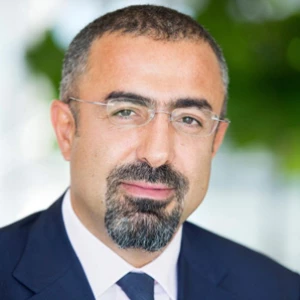For defense and security agencies worldwide, doing more with less has never been more difficult. They must keep raising the bar in an operating environment awash in fresh challenges.
Defense and security institutions turn to BCG to surmount these challenges because of our extensive experience in both the private and public sectors. We excel at tailoring private-sector best practices to our defense and security clients’ unique goals—such as improved equipment reliability, vital operating-model innovation, and significant run rate savings. These impressive outcomes help defense and security agencies and public safety organizations provide for the comfort, safety, and security of their citizens.
Our Approach to Defense Consulting
We bring a powerful suite of offerings to each defense and security client:
- Acquisition Excellence. Growing supplier margins paired with budget pressures have reconfigured the defense supply chain. Our defense consulting teams bring powerful tools and approaches as well as deep insights into supplier economics—drawn from more than 240 projects—to help government agencies boost their procurement prowess.
- Digital Innovation. We help defense and security organizations sharpen their competitive advantage by deploying the right digital solutions. These solutions enable them to supercharge their operational efficiency and to harness data analytics so that they can make better and more effective business decisions.
- Sustainment Modernization. Reinforcing capabilities such as smart maintenance, lean logistics, and strategic optimization, our systematic approach maximizes the availability of public-sector security systems and military industry personnel during operations. To accomplish this, we help clients strengthen their understanding of cost drivers, draw on predictive analytics, and capture synergies through international cooperation to reduce the costs and boost the availability of ready-to-use equipment.
- Space. BCG is a trusted adviser to the world’s leading players in the space industry across the full value stream and with both industry and government, offering a qualified perspective on critical challenges. We help government agencies stand up new space organizations, commercialize activities, and spur industry while supporting merger and acquisition strategies and public- and private-sector partnerships.
- Cybersecurity and Digital Risk. Our involvement in international standards, policies, and regulations, paired with academic and industry product research, gives us unique insights into the arena of cyber defense. Our cyber services—including our framework for evaluating the effectiveness of cyber defense tools—have attracted attention from the most technologically advanced security enterprises.
- Artificial Intelligence. BCG is an authority on the use of AI in the public sector, publishing studies on government applications and benchmarking public sentiment on AI use. Our defense and security clients draw on our expertise to create usage frameworks for AI and to develop implementation and training strategies.
- Organizational Transformation. Our defense consulting teams support the development of new agencies and the restructuring of existing ones by tailoring commercial best practices to the public sector. Core areas of expertise include organization design, agility, strategic workforce planning, and talent management—all of which help clients attract, retain, and develop high-value defense personnel.
Our Client Work in Defense and Security
Our Defense and Security Solutions
Acquisition and Contracting Excellence (ACE) Tool
Acquisition and Contracting Excellence (ACE) Tool
Contractor Pricing Analysis Approach
Contractor Pricing Analysis Approach
Cost Transparency Approach
Cost Transparency Approach
BCG’s partnership with the Munich Security Conference connects one of the world’s top management consulting firms with the world's best independent forum for high-level defense policy experts and decision makers to exchange insights on transnational security and foreign policy. To support the MSC’s mission, BCG is sharing our insights and expertise, including our latest thought leadership on four pressing international defense and transnational security topics.
Explore Our Insights on Defense and Security






Meet Our Defense Consulting Experts






Highly Qualified External Senior Advisers
In addition to our seasoned internal experts, we bring a cadre of highly qualified senior advisers who actively engage in our projects. Among the most notable are:
- Edward A. Rice, General, US Air Force, Commander of Air Education and Training Command
- Judy Fedder, Lt. General, US Air Force, Deputy Chief of Staff for Logistics, Installations, and Mission Support
- Michael Finley, Rear Admiral, US Navy
- Michael Vickers, US Under Secretary of Defense for Intelligence
- Stephen Wilson, General, US Air Force, Vice Chief of Staff
- Ellen Lord, US Under Secretary of Defense for Acquisition and Sustainment
- Joe Kernan, Vice Admiral, US Navy, Under Secretary of Defense for Intelligence and Security
- Chris Murray, Senior Executive Service, US Intelligence Community
- Jim Zortman, Vice Admiral, US Navy, Commander, Naval Air Forces
- Jeff Brooks, Rear Admiral, US Navy
- Mark Faulkner, Lt. General, US Marine Corps, Deputy Commandant for Installations and Logistics
- Joe Martin, General, US Army, Vice Chief of Staff
- Bill Lescher, Admiral, US Navy, Vice Chief of Naval Operations
- Nancy Chawan, Senior Associate Deputy Minister, Canadian Department of National Defense
- Luc Cassivi, Rear Admiral, Royal Canadian Navy
- Al Meinzinger, Lt. General, Commander Royal Canadian Air Force
- Ton van Loon, Lt. General, Royal Netherlands Army
- Simone Wilkie, Maj. General, Australian Army
- Peter Tauber, Parliamentary State Secretary, German Ministry of Defense
- Sir Mark Poffley, General, British Army, Deputy Chief of the General Staff
- Richard Kidd, US Deputy Assistant Secretary of Defense for Environment & Energy Resilience
- George Kovatch, Deputy Comptroller (Budget and Appropriations Affairs), US Department of Defense
- ACM Sir Mike Wigston, Former Chief of the Air Staff, U.K. RAF










